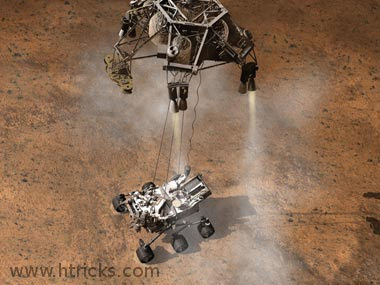Scientists are studying the images of stones cemented into a layer of conglomerate rock, reported Xinhua. The sizes and shapes of stones offer clues to the speed and distance of a long-ago stream's flow. "From the size of gravels it carried, we can interpret the water was moving about three feet per second, with a depth somewhere between ankle and hip deep," said Curiosity science co-investigator William Dietrich of the University of California, Berkeley.
"This is the first time we're actually seeing water-transported gravel on Mars. This is a transition from speculation about the size of streambed material to direct observation of it." The finding site lies between the north rim of Gale Crater and the base of Mount Sharp, a mountain inside the crater. Earlier imaging of the region from Mars orbit allows for additional interpretation of the gravel-bearing conglomerate.
The imagery shows an alluvial fan of material washed down from the rim, streaked by many apparent channels, sitting uphill of the new finds. The next step will be to find a good spot to drill into the rock, NASA says. And they'll be looking for possible carbon deposits, to determine whether the water on Mars once supported life.
Curiosity, loaded with the most-sophisticated instruments ever used to explore another world, touched down on the Red Planet Aug 6. During the next two years, it will use its 10 instruments to investigate whether conditions have been favourable for microbial life and for preserving clues in the rocks about possible past life.















